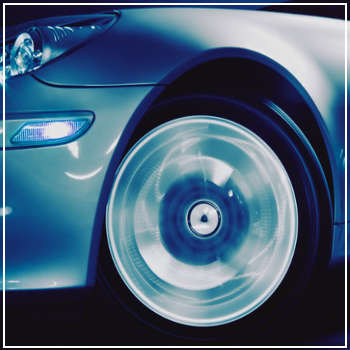 Out of all the symbols on a car dashboard, the TPMS sensor tends to be taken for granted among the other warning signs. The Tire Pressure Monitoring System alerts a driver when their vehicle’s tire pressure is too low. Some people think that since it’s not a flat tire, the matter isn’t so urgent. Yet, there are many disadvantages to ignoring the warning light.
Out of all the symbols on a car dashboard, the TPMS sensor tends to be taken for granted among the other warning signs. The Tire Pressure Monitoring System alerts a driver when their vehicle’s tire pressure is too low. Some people think that since it’s not a flat tire, the matter isn’t so urgent. Yet, there are many disadvantages to ignoring the warning light.
What Does the TPMS Light Indicate?
When the orange horseshoe symbol with an exclamation point appears on your dashboard, you know that your tires are low on air pressure. However, did you know that the status of the light has an impact on what the underlying issue could really be? Consider these three scenarios:
- The light stays on: If the light remains steady the entire time your car is running, the TPMS system is telling you that at least one tire is low.
- The light flashes: A flickering symbol could be an indication of a system malfunction. To find out if there is really something wrong, visit our technicians.
- The light goes on and off: The TPMS sensor could be fluctuating as the result of temperature. Moving your vehicle from cold to hot can cause a system error.
In the event of these situations listed above, you have the option to inspect the tires yourself. Most gas stations have a gauge and air pump you can use to inflate your tires back to manufacturer specifications.
How Does Low Tire Pressure Affect Your Car?
Contrary to what you may think, low tire pressure has a significant impact on your vehicle’s performance. After all, the tires do support the entire frame and the occupants inside. When one or more of the tires lack air, the following results:
- Increased tire treadwear
- Difficulty handling the vehicle
- Decreased load capacity
- Reduced rolling resistance, the force needed to rotate full tires, and decreased gas mileage
- Decreased water dispersion, your vehicle’s defense against hydroplaning
- Possible tire failure
While all of these instances are dangerous, a loss of vehicle control can be avoided by having your tires checked out when the TPMS light comes on. When filling the tires on your own, be careful not to overinflate, which can also cause premature wear.
When something is wrong with your vehicle, it can be stressful to face on your own. Trust the professionals at DaSilva’s Auto Body Shop, who have the experience necessary to perform proper auto body repairs. In addition to checking your tires, we can provide various other services. Contact us today to learn more.




